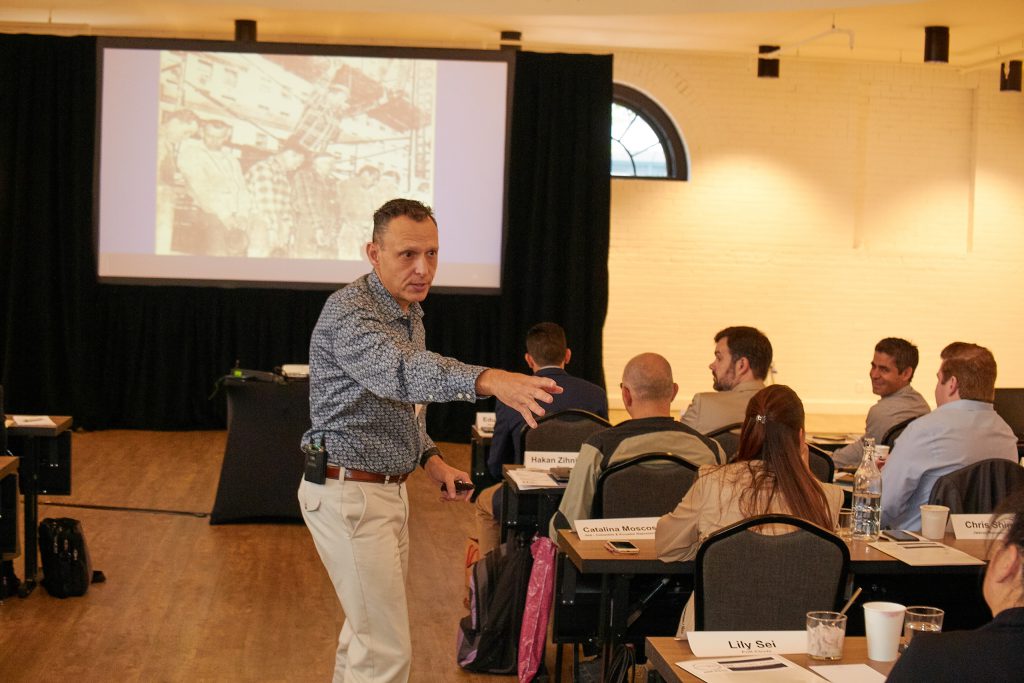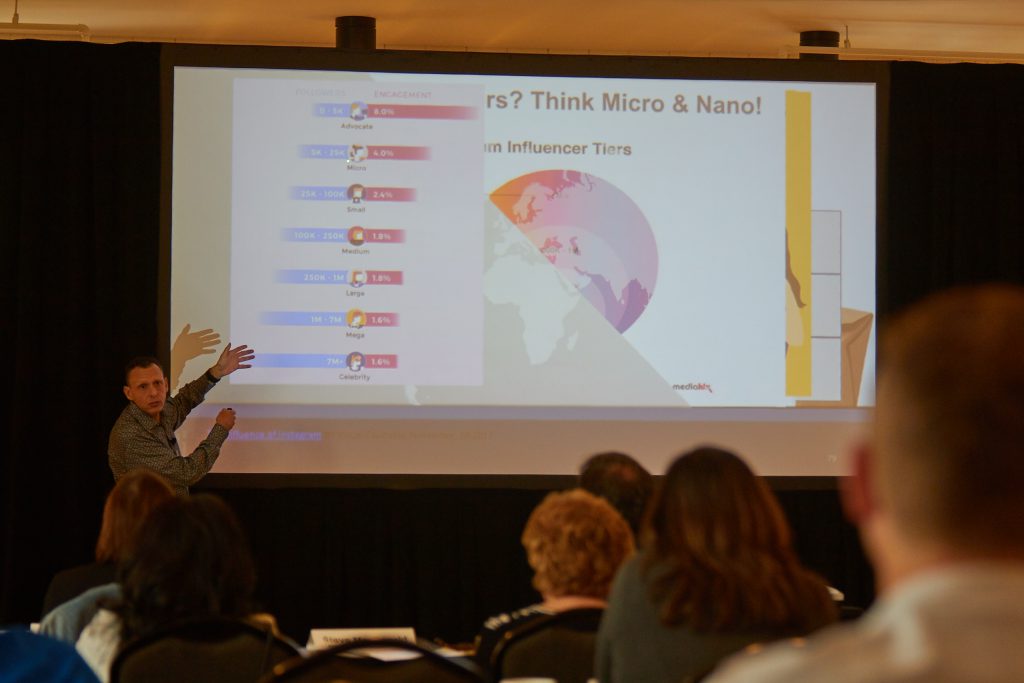Executive Education
Patrick Lynch, Ph.D.
Digital Trends Today
Clinical Assistant Professor of Analytics and Leadership
Thunderbird School of Global Management

The Rise of Global Influencers: How to Engage Micro Influences to Fuel Sales – Part One
The 2019 Global Forum devoted Monday morning to a deep dive into social media and influencer marketing, topics that can be perplexing for many top executives accustomed to traditional measures of ROI.
Dr. Lynch told of his career in global business management. His varied background includes roles at Accenture’s Institute for Strategic Change, where he investigated major technology channel conflicts with brick and mortar during the emergence of the Internet. After working with Wolters Kluwer Health, specializing in pharmaceutical analytics, he joined Thunderbird School of Global Management, which had been independent for 70 years and five years ago integrated with Arizona State University. In addition to his faculty role at the Thunderbird, Dr. Lynch also conducts business at Digital Trends Today.
He began by outlining the presentation’s content and aims. He counseled attendees that they would be leaving their comfort zones to stretch beyond fears to learning and growth. They would change their mindset to develop new commitments and goals for how to measure success. With humorous anecdotes and slides, interactive exercises and a coffee break, Lynch kept the audience energetic and engaged for more than three hours. The highlight was the final segment, when groups at tables played a game with cards and dice, with participants taking on varied roles within a company as they negotiated with influencers and monitored campaign results, some with unintended consequences and others with big wins.
Three Mega Trends Takeaways
- Rise of Global Influencers – Social and psychological shaping forces
- Influencer Revolution – Global tends driving social influencers
- Influencer Economy – The value mechanisms of the Influencer Economy

Rise of Global Micro-Influencers: How Did We Get Here?
Every person feels unique, but actually we think and feel like others. Social forces shape our lives in subtle ways, others influence our life experiences. Lynch described psychological experiments that have demonstrated how people interact and imitate behaviors. He walked us through anthropological developments in human behavior beginning thousands of years ago. He outlined the evolution of the human body that resulted in large brains and the erect skeleton that freed hands for tools and communication. Social ties were critical to support care of helpless infants and create systems for hunting, domesticating animals and agriculture. Survival depended on cooperation and communication to develop technologies.
Early humans displayed social influence dynamics common in marketing today, such as reciprocity, social proof, authority and responses to scarcity.
Influencer Revolution
From a bird’s eye vantage point Lynch outlined the road to the Influencer Revolution. He sped through the evolution of technologies since prehistory, showing the steep trajectory from irrigation to nuclear power. The Industrial Revolution began in 1784 with the invention of timekeeping to track the actual time of labor needed to make a product in order to create a baseline of production costs. The 1860 to 1930 era centered on production consumption. During 1940-1960 marketing evolved and the study of demand generation. In 1969, computers revolutionized mass production and allowed automation and analytics. The 1970-1990 period became more customer-centric in marketing and sales. Today, the world’s most valuable resource is no longer oil, but data. Now artificial intelligence and machine learning relies on information provided by many sources to assist in customer service, manage customer relationships, and co-create personalized products based upon feedback from consumers and influencers.
Social Networks
Facebook premiered in 2006. Within a few years, the popularity of Facebook and other sites meant that social networks captured digital footprints of individuals to define lifestyles, personalities, attitudes and non-demographic characteristics. Segmentation moved from identifying target markets to target personalities. Analysis revealed that 10 Facebook Likes predicted personality better than a coworker, 150 Likes were more accurate than a parent and 300 Likes were more accurate than a spouse.
Lynch showed a short video of the chief experience officer of the TGI Friday’s restaurant chain describe how this corporation employs social media interactions to tailor services for individual customers and that it now defines itself as a technology company instead of a restaurant. Lynch then invited attendees to huddle in groups. He asked the groups to discuss how impactful have these sales marketing trends been in the past five years. How do social media, data and personalization relate to those trends? Some attendees reported their organizations use several platforms, others recognized that the social media can allow a small brand to enter a market and a few nodded that their companies need to do more.
Smart People Can Miss Big Trends
Lynch pointed out that in the 1980s through the 1990s chief executives of major broadcast and print media dismissed the possibilities of internet commerce. He then explained how technology adoption has sped up exponentially: it took 46 years for 25% of the U.S. population to gain access to electricity, 26 years for the same percentage of the population to acquire a television and only seven years to connect to the internet. In 2019, 500 hours of new content is uploaded to YouTube every minute, equal to 720,000 hours daily. Now in North America and Northern Europe, 95% of the populations have internet access, with the lowest penetrations in Africa. By contrast, in January 2019 the ranking of active users of social media networks in their regions is led by U.A.E. at 99%, followed by Asian nations and the U.S. at 70%. Opportunities abound in many countries.

Lynch presented detailed charts, maps and lists of usage rates for various social media platforms globally, impressing the audience with the rapid ascent and penetration of the primary platforms—Facebook, Instagram, Twitter, Snapchat and Pinterest –in the recent three years. He again invited groups to huddle at their tables to discuss their personal experiences with influencers using these platforms and asked participants if they had purchased anything following such recommendations.



